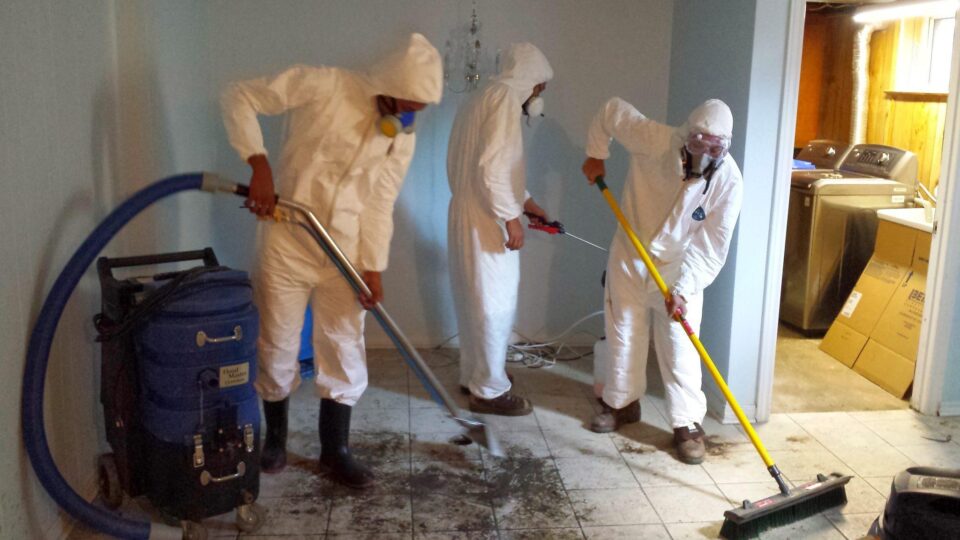When your basement floods due to heavy rain, burst pipes, or sewage backup, it’s not just water you’re dealing with—it’s potential structural damage, mold growth, and a disruption to your peace of mind. That’s why hiring a basement flood cleanup service with professional-grade equipment is essential. These advanced tools are designed not only to remove water efficiently but also to dry, dehumidify, and restore your basement quickly and thoroughly.
At Ideal Response, professionals rely on powerful and precise equipment to deliver fast and reliable water remediation solutions. This article explores the essential tools used in the industry and why they make such a huge difference compared to DIY methods.
Table of Contents
What Kind of Pumps Do Pros Use to Extract Water?
The first step in basement flood cleanup is to remove standing water. Professionals use a combination of heavy-duty pumps tailored to different water levels and volumes:
- Submersible Pumps
These are ideal for deep flooding. Submersible pumps are fully immersed in water and can move large volumes quickly. They’re built with rugged materials to handle dirty or debris-filled water, making them perfect for basements filled with murky floodwater.
- Truck-Mounted Extractors
High-capacity extractors mounted on service trucks offer maximum power for large-scale floods. They provide stronger suction than portable machines, speeding up the water extraction process considerably.
- Portable Water Extractors
In smaller or hard-to-reach areas of the basement, technicians often use portable extractors. These lightweight, maneuverable units are perfect for targeted water removal in corners, around support beams, or under furniture.
How Do Professionals Dry Out a Basement After Water Removal?
Once the water is extracted, the real restoration begins. Drying out a basement thoroughly is key to preventing mold and ensuring structural integrity. Professionals use a mix of drying equipment to get the job done.
- Industrial-Grade Air Movers
Air movers circulate high volumes of air throughout the flooded area, accelerating the evaporation process. Unlike standard household fans, these units are designed for rapid, efficient drying, and are often positioned in strategic patterns for optimal airflow.
- Desiccant Dehumidifiers
Unlike traditional refrigerant dehumidifiers, desiccant models absorb moisture through a chemical drying process. These are especially effective in colder basement environments where standard dehumidifiers may struggle.
- Refrigerant Dehumidifiers
These machines condense moisture from the air by cooling it, collecting water in reservoirs or directing it through a hose. They are energy-efficient and are excellent at lowering relative humidity to safe levels quickly.
At Ideal Response, both desiccant and refrigerant dehumidifiers are used based on basement conditions, ensuring customized water remediation strategies.
What Tools Help Detect Hidden Moisture?
Even after the basement looks dry, hidden moisture can remain behind walls, under floors, and in insulation. This trapped water can lead to long-term damage and mold growth if not properly addressed.
- Moisture Meters
Technicians use pin-type and pinless moisture meters to detect moisture content in wood, drywall, and other building materials. These tools help professionals determine how deep the water has penetrated.
- Infrared Cameras
Thermal imaging cameras identify cold, damp areas behind walls and under floors. They visualize temperature differences caused by hidden moisture, allowing crews to focus drying efforts more precisely.
- Hygrometers
Used to measure the relative humidity of the environment, hygrometers help professionals ensure the basement is returning to safe, dry conditions.
These tools are vital for proper basement flood cleanup service, ensuring that no moisture is left behind to compromise your home’s integrity.
What Safety Equipment Do Technicians Use?
Floodwaters often contain contaminants, sewage, or mold spores that pose health risks. Therefore, safety gear is a non-negotiable part of any professional water cleanup.
- Personal Protective Equipment (PPE)
Technicians wear gloves, boots, goggles, and full-body suits to protect themselves from bacteria, chemicals, and other hazards found in floodwater.
- Respirators
Depending on the environment, especially in mold-prone basements, N95 or full-face respirators are used to prevent inhalation of harmful particles.
- Antimicrobial Sprayers
Before and after water removal, professional crews use antimicrobial and disinfectant sprays to sanitize affected areas and prevent mold and bacterial growth.
With Ideal Response, these safety protocols are standard, ensuring your home and family are not exposed to lingering hazards after water remediation.
What Happens During Structural Drying and Restoration?
Basement flood recovery doesn’t end with water removal—it often includes structural drying, cleaning, and sometimes reconstruction.
- Negative Air Machines
These air scrubbers filter out airborne contaminants and particles from the indoor environment. They’re particularly useful in mold-infested basements or areas with sewage contamination.
- HEPA Vacuums
High-Efficiency Particulate Air (HEPA) vacuums trap mold spores and fine particles, helping restore air quality to safe levels.
- Drying Mats and Injectidry Systems
For hardwood floors and behind-wall drying, professionals use systems that inject warm, dry air into enclosed or hard-to-reach areas to accelerate drying without extensive demolition.
This specialized equipment is why homeowners consistently turn to companies like Ideal Response for reliable basement flood cleanup service.
How Does Professional Equipment Save You Time and Money?
Using the right tools isn’t just about speed—it’s about doing the job thoroughly and correctly the first time. Here’s how professional equipment leads to cost-effective outcomes:
- Faster drying times reduce the risk of mold, which can be costly to remove later.
- Thorough moisture detection prevents hidden damage and future repairs.
- Advanced dehumidifiers reduce the chance of drywall warping or flooring damage.
- Industrial-strength cleaning means fewer items need to be thrown out or replaced.
In the end, professional equipment not only restores your basement but also protects your home’s value and safety.
When Should You Call in the Professionals?
If your basement has more than a few inches of water, or if the water has been sitting for more than 24 hours, it’s time to call in experts. Additionally, if the water comes from a sewage backup or natural disaster, professional help is essential to ensure proper disinfection and drying.
The expert team at Ideal Response uses all the advanced tools and techniques mentioned above, providing complete water remediation services with efficiency, speed, and safety.
Conclusion: Why Trust Equipment Matters in Basement Water Removal?
Basement flooding is a stressful experience, but recovery doesn’t have to be overwhelming. By hiring a professional basement flood cleanup service equipped with high-powered extractors, dehumidifiers, air scrubbers, and moisture detection tools, you can ensure your basement is restored safely and thoroughly.
Ideal Response offers cutting-edge solutions and trained technicians who use top-of-the-line equipment to restore your home. When it comes to water damage, the tools used can make all the difference in recovery speed, cost, and safety.

